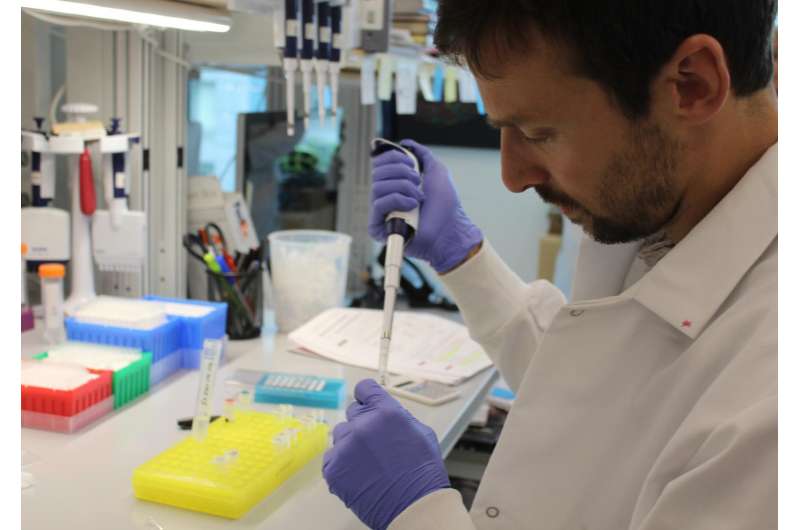New genomics tool CITE-Seq enables large-scale multidimensional analysis of single cells

A new technique developed by scientists at the New York Genome Center (NYGC) represents an important step forward for single-cell RNA sequencing, an advancing field of genomics that provides detailed insights into individual cells and makes it possible to distinguish between different cell types and to study disease mechanisms at the level of individual cells.
CITE-seq, or Cellular Indexing of Transcriptomes and Epitopes by sequencing, couples the measurement of surface protein markers on thousands of single cells with simultaneous sequencing of the messenger RNA (mRNA or transcriptomes) of those same single cells.
The NYGC researchers' proof-of-concept study of CITE-seq, published today in Nature Methods, monitored 10 surface proteins, together with transcriptomes, of 8,000 single cells, the largest scale demonstration of multidimensional single-cell analysis to date.
"No other method allows simultaneous measurements of transcriptomes and proteins on the same scale," said Marlon Stoeckius, PhD, a Research Scientist in the NYGC's Technology Innovation Lab, who led CITE-seq's development. "CITE-seq adds to already established methods for transcriptome analysis without any detrimental effects on the quality of the data generated."
Previous approaches relied on capturing protein information of individual cells by cytometry before depositing these cells onto plates for single-cell RNA sequencing. The current approaches suffer from a low throughput (the number of cells that can be analyzed) and are limited to a relatively small number of protein markers.
The protein detection component of CITE-seq is based on DNA-barcoded antibodies, which produce a sequencable readout that is captured along with the transcriptome of the cell. The integration of the protein and RNA data generated by CITE-seq required custom data analysis, which was developed in close collaboration with the lab of Rahul Satija, PhD, a Core Faculty Member at the NYGC. As an example of the power of CITE-seq, the investigators used the multimodal data to identify subclasses of natural killer (NK) cells that are difficult to distinguish based on transcriptomes alone.
The capacity of CITE-seq to more finely dissect cell populations has many potential applications in clinical research. "One possible future direction is to use CITE-seq on tumor samples to examine both individual tumor cells and the different pools of immune cells that infiltrate the tumor. This approach could be very useful in the deep characterization of tumor heterogeneity and in the development of new immunotherapeutic approaches," Dr. Stoeckius said.
More information: Marlon Stoeckius et al, Simultaneous epitope and transcriptome measurement in single cells, Nature Methods (2017). DOI: 10.1038/nMeth.4380
Journal information: Nature Methods
Provided by New York Genome Center


















